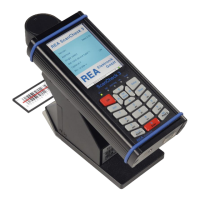Automation
Electronic Devices and Systems
4.6.3.2 Setup Sub-Menu 3 Settings - 1 Code Type Selection - Additional Verification
Criteria
Some codes offer the option of incorporating additional verification criteria (e.g. for structure
and size) into the verification. Such codes are supplied with a "+" sign in front of the selection box in
the code table.
This is done by pressing the <Setup> button again.
The individual criteria are described in the following chapters.
If the code type does not enable any selectable additional verifications, the right screen message
appears.
4.6.3.2.1 The EAN / UPC Code Family
4.6.3.2.2 EAN-13 - Additional Verification Criteria
According to the GS1 General Specifications, EAN-13 codes are used in various application areas
but primarily in retail.
In retail, the GTIN
®
(Global Trade Item Number
®
) is shown with the EAN-13. Additional applications
are in goods distribution centers and also within store chains when required.
The code size of the EAN-13 can vary between 80% (module width 0.264 mm) and 200%
(module width 0.66 mm) for the "Retail" field. This is also the
factory preset for code size
verification.
If the EAN-13 is used in goods distribution, it is assumed that it will also be used simultaneously in
retail. For that reason, the code size must be permissible for both application areas.
This reduces the allowable code size in the "General retail" field to values between 150% (module
size 0.495 mm) and 200%.
In the case of "On demand," labels are printed for company-internal applications on site in the store.
Due to the low resolution of thermal printers (typically 200-300 dpi) and due to the normally narrow
label sizes used in this application, codes with a size from 75% (module widths from 0.250 mm) are
also permitted. This applies only for the GS1 General Specifications, however.
The ISO/IEC standard 15420 does not permit this size reduction.
An EAN-13 code can be expanded with an additional code 2 from 5. This "Add On Code" is used for
example in Germany to identify the different editions of daily newspapers and magazines. One can
thereby always use the same article number for a product - a publication, in this case - but still
differentiate the editions clearly from one another with differing add on numbers.

